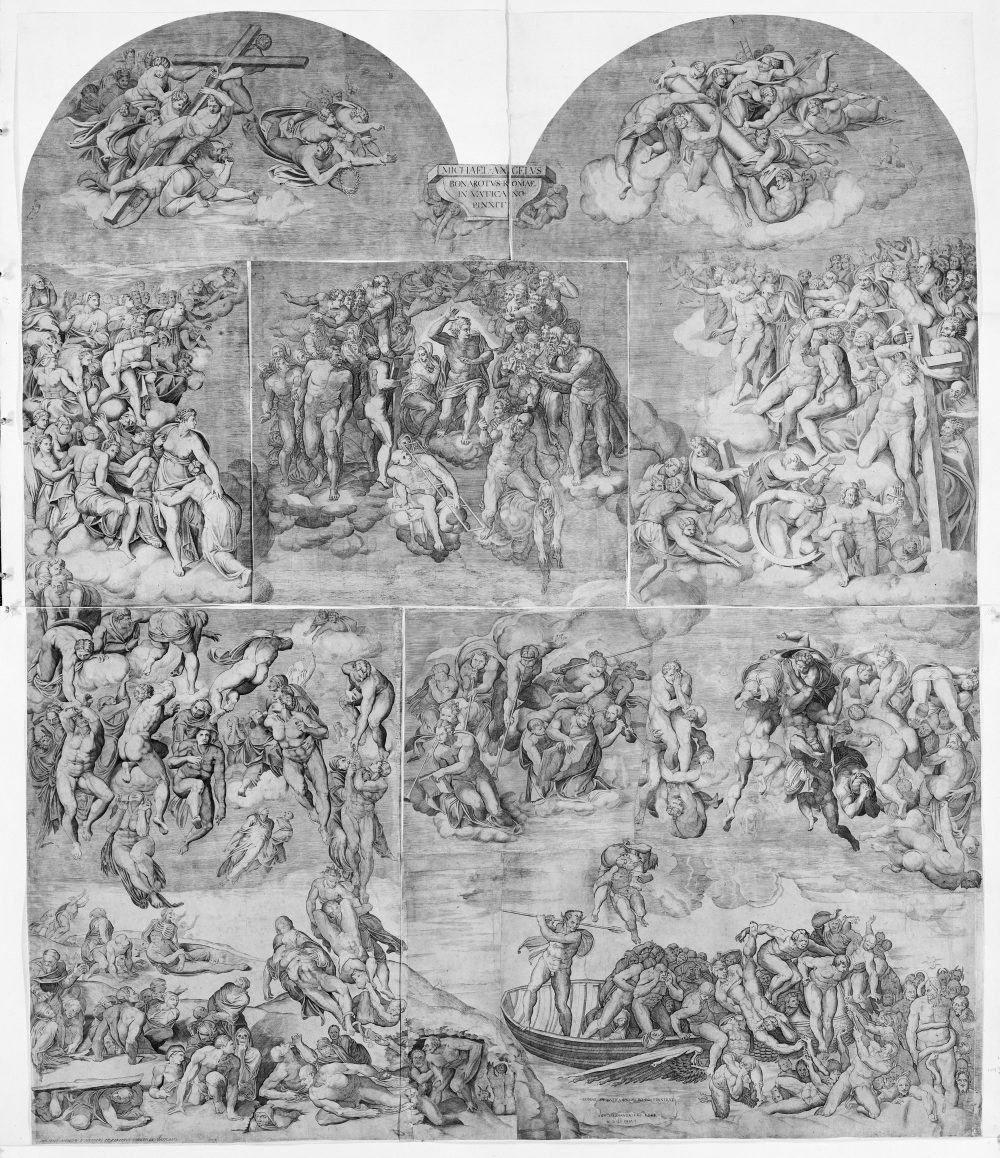
Metropolitan Museum of Art, New York, www.metmuseum.org
In this part of the dialogue, the participants discuss which is the right emotion in the portrayal of Mary in the “Last Judgement”.
“M. Francesco continued: ‘[…] Another personal invention [capriccio] I notice is that of having painted the glorious Virgin fearful and terrified, as if she does not have the courage to ask her angry son about the course of his great mystery, insecure in the face of God’s anger; and, as a result, she withdraws herself as much as she can beneath her son’.
M. Vincenso said: ‘I think he did that only to point out to us the title she has Mother of Mercy, and he shows her fearful, as one shrinks from such severity and the loss of so many. He is also showing that the nature of women is to be compassionate and meek: she turns aside in order not to witness such serve justice’.
M. Ruggiero replied: ‘All this conjecture of yours is false, because on that day when this event happens, the title of which you speak will no longer exist. She then will know that the time for pity has passed and that the time for justice is come, and she will know who deserves reward, who punishment, both who are destined for glory and who for torment. She will also know that God is immutable; therefore she does not have the thought or the fear you mention. So it will not be necessary for her to pray for any of the damned; just as Augustine said that it is insult to martyr to pray for him, so it is an insult to pray for the damned. On that day the glorious Virgin will bring her will into conformity with that of her son and will feel repugnance for the damned rather than pray for them. And I tell you further that she, along with the Apostles and other saints, will condemn the wicked to hell; and because of this I don’t think she fill feel the anguish or compassion you speak of. However, we can place this too among conceded fictions, solely to show the ignorant that she is the Mother of Mercy, and mother to all’.”
“Rispose M. Ruggiero:'[…] Un altro capriccio io noto; il quale è d’aver finta la gloriosa Vergine tutta timorosa e piena di spavento, come chi non ardisca domandar a l’irato figliuolo il successo di tanto mistero, non bene assicurata de l’ira di Dio, e perciò si ritira quanto più può sotto al figliuolo’.
Disse M. Vincenso: ‘Io penso che ciò faccia solo per mostrare a noi il titolo ch’ella ha di madre di misericordia, e timorosa si dimostra come quella ch’aborisce tanta severità e perdita di tanta moltitudine; per mostrarne anco la natura de le donne esser pietosa e rimessa; e per non vedere tanto severa giustizia si sia in canto volta’.
Rispose M. Ruggiero: ‘Tutto questo presuppogito vostro è falso, perché in quel giorno et in quel’atto sarà cessato il titolo che voi dite, sapendo non esser più tempo di misericordia, ma di giustizia, e chi è degno di premio e chi di castigo, e chi è destinato a la gloria e chi a le pene. Sa anco che Iddio è immutabile; però non caderà in lei questo pensiero né questo timore. Però non sarà uopo che porga priego alcuno per i dannati, conciossia che diceva Agostino che fa ingiuria al martire chi prega per il martire; così fa ingiuria al dannato chi prega per lui. Però la gloriosa Vergine in quel giorno conformerà la volontà sua con quella del figliuolo e anzi aborrirà tutti i dannati, che prieghi per loro. E di più vi dico che essa, insieme con gli Apostoli et altri santi, condennerà i reprobi a l’inferno; per questo penso che in lei non caderà quel cordoglio, né quella compassione che voi dite. Pur anco questa possiamo passare fra le finzioni concesse solo per mostrare agli ignoranti che è madre di misericordia, et anco ad ognuno’.”
Gilio 2018, 192, n.323-325, fig. 19-22



